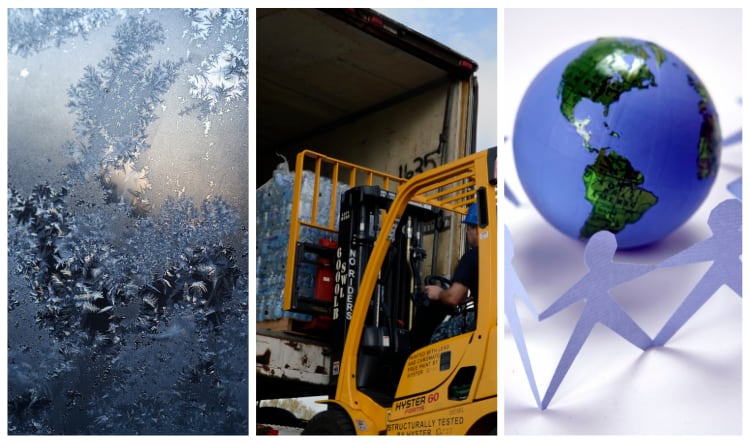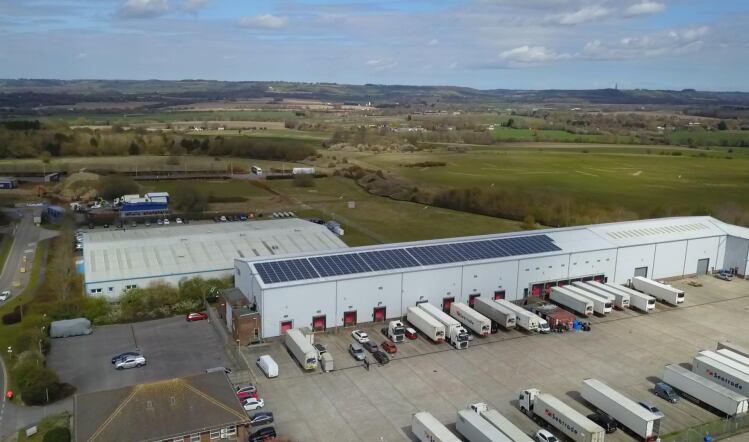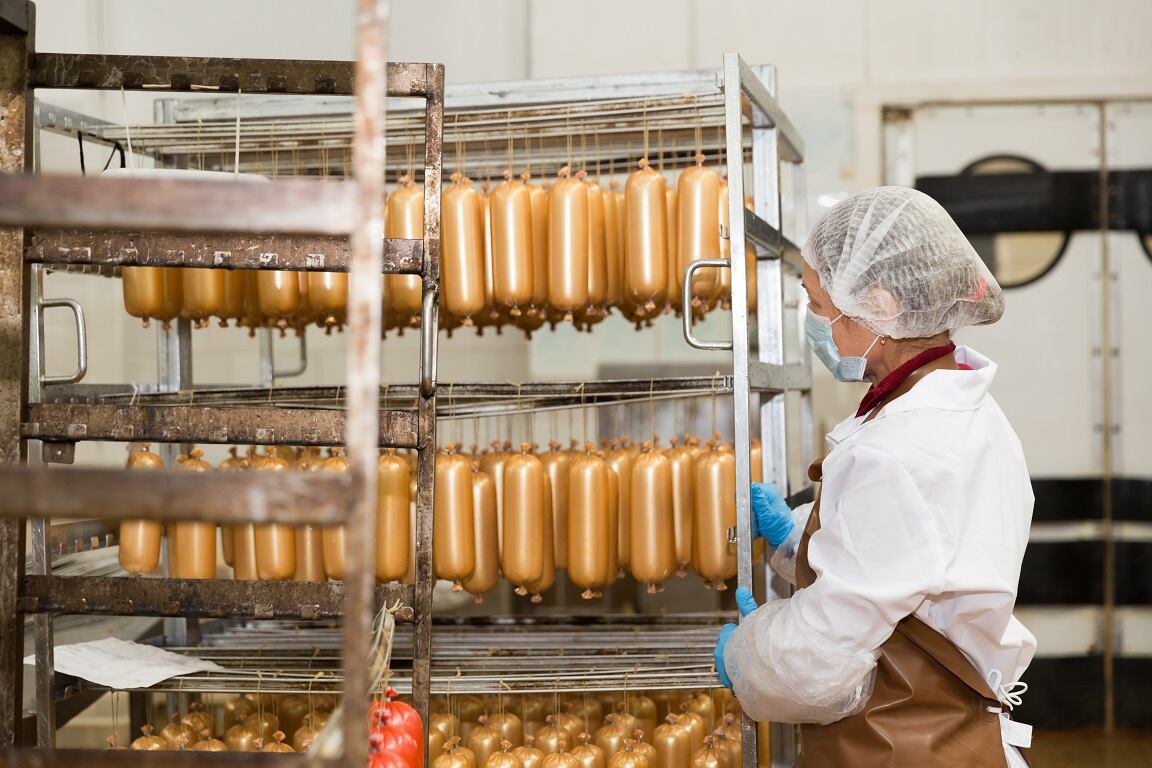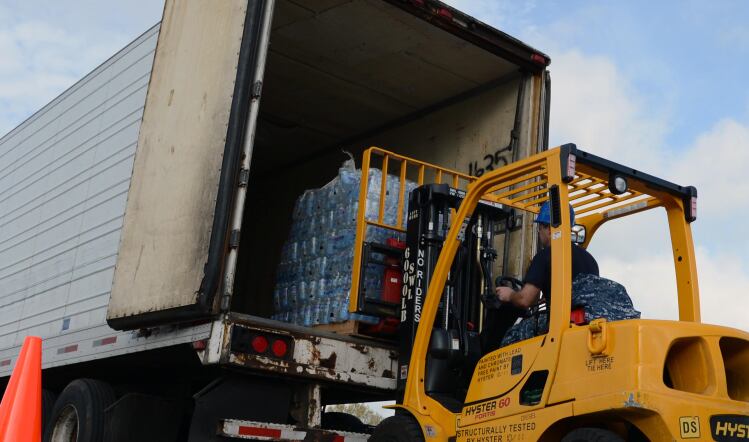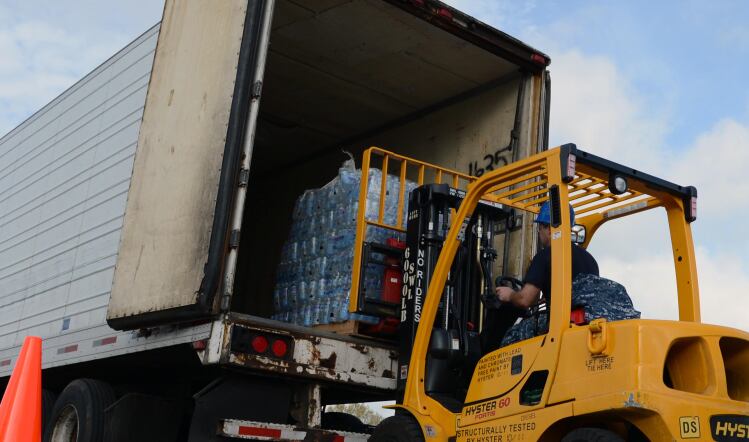
Earlier this year, British Sugar head of food safety and quality and former British Frozen Food Federation technical and regulatory affairs manager Su Dakin highlighted three big challenges facing the food and drink cold chain.
Of these challenges, the first two specifically called out inadequacies in how chilled and frozen foods are transported from warehouses and factories to customers.
Frist, she detailed the issues surrounding the docking, loading and unloading of chilled and frozen goods at the factory and their destination – issues that could leave food exposed to warm and humid air.
In particular, the time it takes for goods to be loaded or unloaded to a lorry could be minimised through the use of better designed loading bays that prevent products from coming into contact with the air outside.
Second, she challenged whether the accepted storage temperatures for frozen food and the idea that keeping products at -18°C was an acceptable standard. Dakin argued there was little regulation that governed frozen food storage and called for changes to be made in order for the UK to match international standards of refrigeration.
Another major challenge facing the food and drink cold chain was the demand for cold storage space – a demand that has outstripped supply for some years. The effects of this problem have been highly visible during the changes and food chain disruption over the past two years, according to the Cold Chain Federation (CCF).
Stockpiling prompted by the uncertainty of Brexit and the shutdown of hospitality and air travel at short notice in response to the pandemic piled the pressure on. “Both created fairly short-term but repeated pinch points of increased pressure on UK cold store capacity,” explains CCF chief executive Shane Brennan.
“We can expect more food chain disruption over the coming year with further Brexit changes and the wider driver shortage.”
As well as these ‘short-term pinch points’, changes to the nature of the food chain are also contributing to a more permanent increase in the demand for cold storage, Brennan adds.
“After the disruption of the past two years, a robust and reliable supply chain with varied options and surety of supply is more important than ever,” Brennan continues.
“Customers who previously preferred a more ad hoc approach are increasingly seeking longer term relationships. This all means that demand for cold storage is set to remain very high for the foreseeable future.”
That isn’t to say that there isn’t a silver lining among the gloom created by the surge in demand. Data from the CCF indicated new cold store developments or expansions planned or underway in autumn 2020 were set to increase total UK cold storage capacity by more than 10%. That reflects “prolonged and significant investment” in the growing UK cold storage industry, Brennan says.
Storage space demand
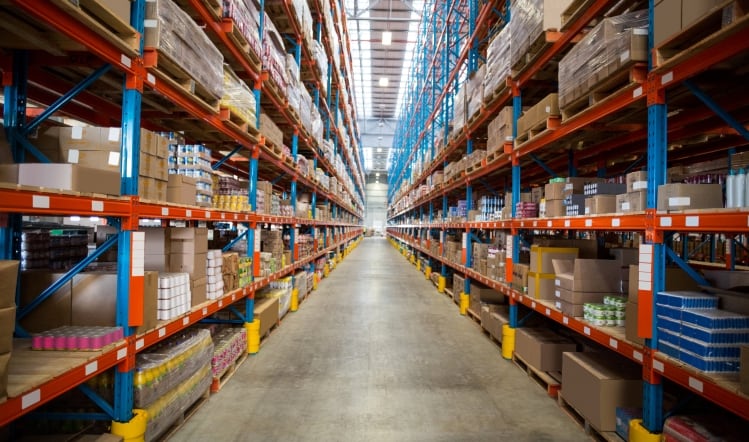
The demand for more storage space is not the only trend that has arisen in refrigeration. Manufacturers and consumers have a heightened interest in the sustainability of production methods, not least in how food is stored and preserved.
Manufacturers’ hands have also been forced by regulations on fluorinated greenhouse gases (F-Gas) putting pressure on them to use refrigerants that are less harmful for the planet.
To counter the potential impact refrigerants and refrigeration operations could have on the environment, developers of cold storage systems have turned to green alternatives such as carbon dioxide (CO2).
CO2 is a natural refrigerant with zero global warming potential, making it a good choice for the food processing industry. It has a wide temperature range which also makes it versatile. Commercial ‘off-the-shelf’ equipment also allows installers to consider CO2 systems as a viable option for food processors.
One such business looking to revamp its refrigeration systems was Scotland-based Campbells Prime Meat, which turned to J & E Hall to help cool a new freezer room at its processing plant in Linlithgow near Edinburgh.
Two 20-kilowatt J & E Hall CO2 refrigeration packs support the freezer room to ensure that correct temperatures are maintained.
Gary Barrett, J & E Hall Glasgow centre supervisor and lead on the project at Linlithgow says: “CO2 technology has moved on so much in recent years that we were confident that this natural refrigerant would do a good job for Campbells.
“CO2 systems are now cheaper to install and these two CO2 packs were a long-term solution which removed the worries of the F-Gas Regulation and constant concerns about leak testing.”
The relative merits of CO2 aside, it seems the entire cold chain is making progress on wider eco-friendly goals, according to the UK Warehousing Association (UKWA). “Refrigeration is probably the most energy intensive aspect of warehousing,” it states.
“Under the Climate Change Agreement, the UK Government set a target for cold stores to improve their energy efficiency by 12% by 2020, but industry responded with a 16% improvement and continues to outperform expectations.”

Pressure from investors
Of course, it isn’t only the Government that has an eye on the global impact of refrigeration on the environment. While rules and regulations stipulate the guidelines that food and drink manufacturers must adhere to, there is much to be said about the influence of investors.
A growing number of investors are looking to put their money into businesses that can prove their sustainability credentials, with those companies unable to do so missing out on funding.
Climate Action 100+ is reportedly the world’s largest investor engagement initiative on climate change, responsible for over $55tr (£40tr) in assets. Last month it released new expectations to help food and beverage firms make progress towards achieving a net zero future in line with the goals of the Paris Agreement.
“We’re encouraging companies in the sector, and investors working with those companies, to be aware of and take action on addressing emissions throughout these supply chains,” the Climate Action report states.
It’s clear the environmental impact of refrigeration and refrigerants plays a big part in how manufacturers develop their cold chains. But the decisions have become harder as more challenges present themselves created by seismic factors such as Brexit or COVID-19.
But, as the UKWA points out, the food and drink supply chain has already proven it’s well on its way to meet environmental and sustainability targets set by the Government. The only question is if that same Government can return the favour and act quickly to solve some of the more pressing matters involving staff shortages across the country.
IPCO develops highly adaptable cooling tunnel
Netherlands-based IPCO has developed a new adaptable cooling tunnel for use across the food production industry.
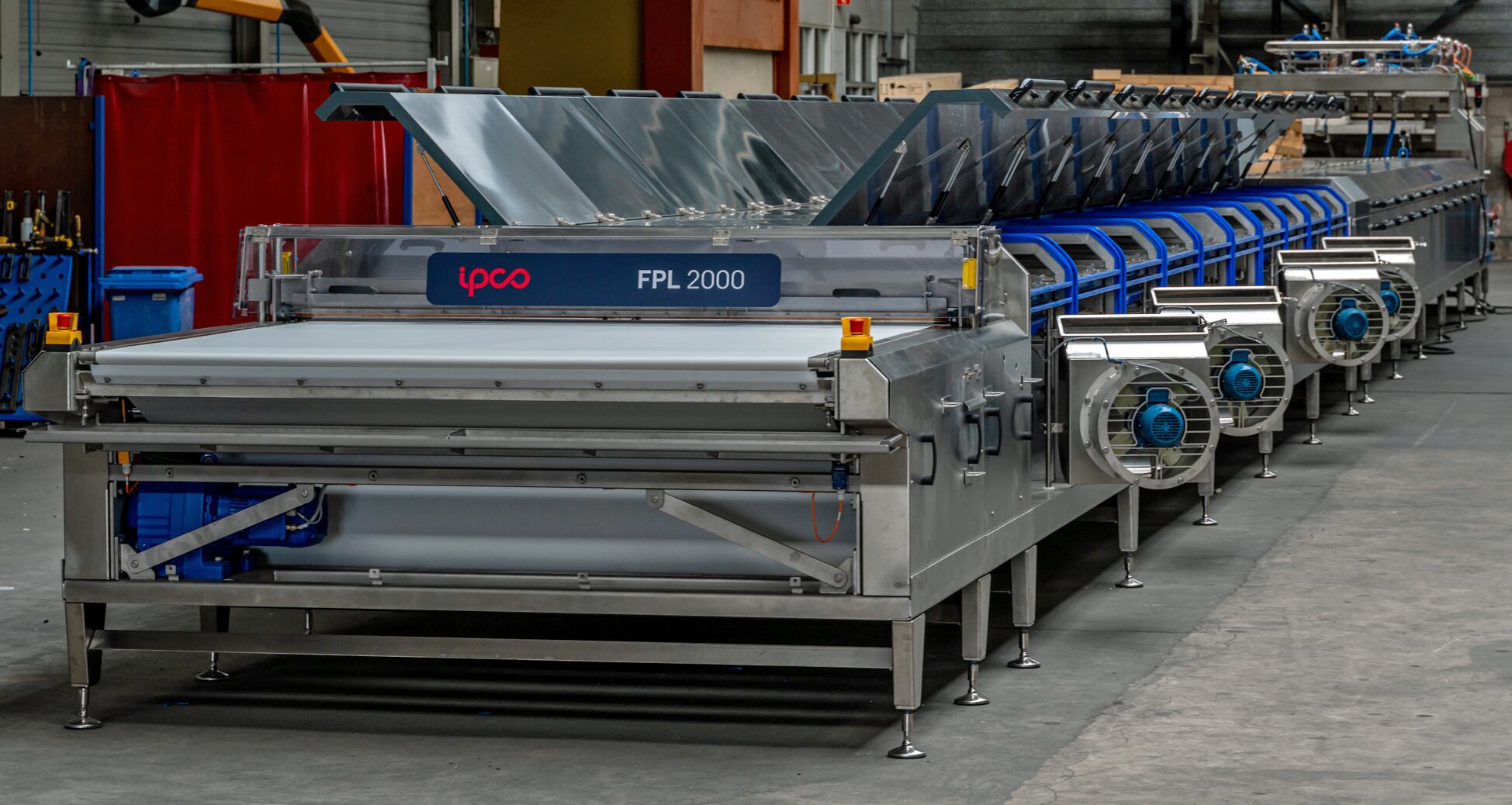
Designed as a single pass process, IPCO’s new line can be equipped with stainless steel or plastic belts in standard widths of 1,500 mm or 2000 mm, with other sizes available.
The tunnel is supplied in modular form with all electrical equipment ready for connection, enabling fast installation and commissioning. It can be configured for use in a wide variety of food manufacturing situations where products need to be cooled down. These include forming or moulding for chocolate and confectionery or cooling products ranging from cookies to cereal bars in the bakery industry.
Mitchell Paquaij, commercial manager at IPCO Food, says: “In developing this process we aimed to create a system that would deliver high levels of operability, accessibility and cleanability, while at the same time offering high levels sustainability and energy efficiency.
“In other words, we wanted to make a cooling tunnel that is as economical, energy efficient and user friendly as possible. And we are confident that we have achieved that goal.”


